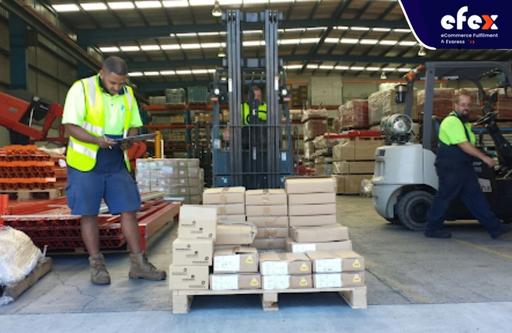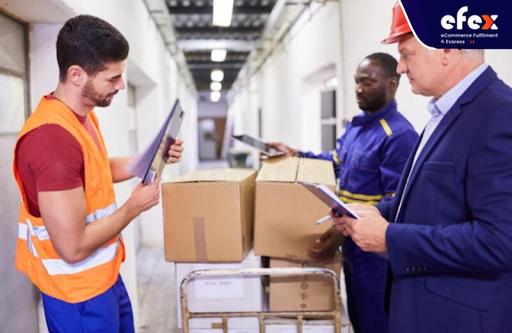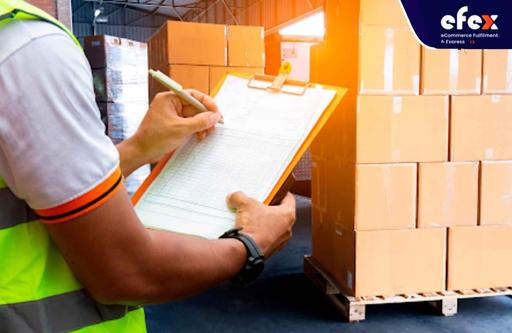
More Helpful Content
When businesses want to store information in moving goods from suppliers, they will use goods receipts. Seen as an important component in managing the movement of items in the warehouse, goods receipts will help make this process more transparent and optimize the business's shipping decisions.

Goods receipt is a document used by all businesses involved in the purchase and sale of goods. Goods receipts are used to record and track the transport of commodities between two suppliers. When using merchandise receipts, you will ensure that all items are accounted for. These receipts will be used as evidence if there is a mistake or dispute during the transportation of the goods.
👉 Read More: What is Direct Store Delivery (DSD)? Example and Model
Some of the commonly used SAP cargo receipt types are:
In most cases, the merchandise receipt generated in connection with a manufacturing order or order contains all the information needed for business planning.
👉 Read More: What Is Electronic Product Code (EPC)?
Goods are typically received in the SAP Materials Management (MM) module with reference to the purchase order issued by the buying department. Purchase orders are essential for tracking controlling inventories and purchases.
Goods are often received with reference to a manufacturing order in SAP's Production Planning (PP) module. A production order explains why a substance is being manufactured. It is a crucial tool for inventory planning and management.
You can specify reserved amounts to plan goods receipts when establishing goods receipts without a purchase or manufacturing order.
The warehouse management system (WM) includes transactions from checking the barcode on a slip of the container to the process of transporting goods into the warehouse. The process of transporting goods into the warehouse will be automated if using a warehouse management system. If shipping is done manually, the receiving process will include the following stages:

You can also start the pick-up procedure by manually issuing a transfer order; no transfer request is required for this. The product's receipt can then be posted in the IM.
A receiving process will include the following 5 steps:
The first step of the receiving process is to determine that the goods have been received. This can be done by comparing packing lists or purchase orders with actual items that were delivered. Once the products have been identified, they must be cross-checked with the shipping invoice to confirm that they are all present and correct.
The next step is to verify information regarding the status and quantity of the item that has been received. To do this, you can check to see if the goods are in sufficient quantity, for any damage or loss. If the goods are damaged or missing, this needs to be included in the invoice to claim compensation from the carrier.
You can perform unloading and placing goods in the warehouse by placing them in the specified place in the warehouse. You should plan to arrange the goods in advance to make it easier to pick up the goods later. For example, best-selling products should be placed outside, lightweight items can be placed on higher shelves, etc.
👉 Read More: What Is Goods Received Note? Format And Example
To record receipts, you can do this by creating an inventory list on paper or on a computer. The best way is to use inventory software to make recording more convenient. The inventory list also needs to be constantly updated based on current inventory counts.
The final step in the delivery process is the receipt of the goods. You can send notifications to your home via email. Once they receive the notification, the suppliers will initiate a new order process or handle the issues you requested.

If there are any errors after making a receipt, it is necessary to return the delivery note as quickly as possible to notify the person in charge of the payment or the business's finance party for information.
If you feel that receiving goods takes a lot of time and resources, you can apply SAP software. This software will help simplify the receiving process through its electronic automation capabilities. The benefits that businesses receive when building an effective receiving process are:
👉 Read More: What Is Handling Fees? Calculation And Example
The above information has given you basic information about the goods receipt - an important component in building an efficient and transparent exchange process. The benefits of goods receipt have pushed businesses to find a way to apply it in their business in a suitable way. To do that, they will evaluate the characteristics of their goods, consult with partners, apply technology in storing goods receipts, etc. Hope you have a good time with Efex.


